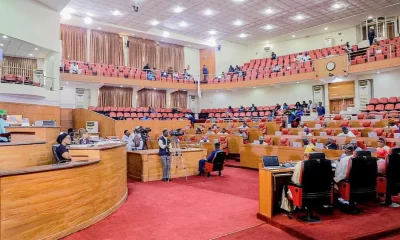Business
Understanding key drivers of commodity prices
Published
2 years agoon

Commodity prices can fluctuate significantly over time. As an investor or business person, it’s important to understand what drives these price changes so you can make informed decisions. In this post, we’ll explore some of the key factors that influence commodity prices.
Supply and Demand
One of the most fundamental drivers of commodity prices is the balance between supply and demand. When demand is high and supply is constrained, prices tend to rise.
For example, an unexpected cold snap that damages orange crops in Florida could drive up orange juice prices due to reduced supply.
On the flip side, bumper crop yields or new sources of supply coming online can outpace demand and put downward pressure on prices.
Overall Economic Growth
The state of the global economy also impacts commodity prices. During periods of strong economic growth, demand for raw materials and natural resources increases as production ramps up. This increased demand places upward pressure on prices.
Conversely, recessions dampen demand and tend to push prices lower. The economic growth of large developing nations like China and India is especially important for commodity prices as these countries require vast amounts of natural resources to fuel development.
Production Costs
The costs involved in producing commodities heavily influence their market prices. Production costs include things like labor, energy, transportation and raw material expenses. When production costs rise, it translates to higher commodity prices in order for producers to maintain adequate profit margins. Changes in energy prices are a major influence, as fuel and electricity are key inputs across the commodity sector. Those performing online commodity trading regularly will want to keep an eye on production prices around the world.
Geopolitical Events
Major political events or unstable conditions in regions that produce a lot of commodities can cause significant price volatility. For example, conflicts in the Middle East, which contains a large share of global oil reserves, often spur spikes in oil prices.
Political turmoil in South America, a top producer of metals and agricultural commodities, can also lead to price swings. Trade policy changes, like new tariffs or export restrictions, can impact supply chains and affect commodity prices as well.
Weather
Extreme weather events and natural disasters can wreak havoc on commodity prices by damaging infrastructure or disrupting transportation routes. Droughts, floods, hurricanes and freezes in agricultural production areas can severely limit crop yields and drive food commodity prices upward.
Energy prices can also be impacted by weather, such as heat waves that spur electricity demand or storms that damage offshore oil rigs. Generally, any weather that threatens commodity production will push prices higher.
Investor Speculation
Commodities attract significant investment activity because they offer portfolio diversification. Hedge funds, pension funds, investment banks and retail investors allocate portions of their capital to commodities. When speculative activity increases, it can amplify pricing trends.
Speculators may pile into commodities during positive price moves, driving prices higher in the short run. High speculative interest can also lead to price bubbles forming. However, when speculators exit en masse, it can lead to dramatic price declines.
Exchange Rates
Since commodities are traded globally in U.S. dollars, fluctuations in exchange rates can influence commodity prices. A weaker U.S. dollar makes commodities cheaper for foreign buyers, boosting demand and prices.
A stronger dollar has the opposite effect, making commodities more expensive for foreign purchasers. Large appreciations or depreciations in major currencies like the euro, yen or yuan impact the commodity pricing equation.
ALSO READ : Labour unions begin strike as meeting with FG, NASS deadlocked
Technological Developments
Advances in extraction, processing and transportation technologies can impact commodity prices by improving efficiency and driving down production costs. Horizontal drilling and hydraulic fracturing techniques, for example, have enabled increased oil and natural gas output from shale formations, lowering energy prices. Rising productivity and automation in agriculture have also limited price growth in some food commodities. However, if new technologies require significant investment, it could restrict supply in the short run and lead to price increases.
Inventory Levels
The current inventory levels of a commodity can significantly influence its price. High inventory levels point to oversupply or lagging demand, which will typically lead to declining prices as excess supply is cleared from the market. On the other hand, falling inventories indicate tightening supply and can spur rising prices as demand starts to outpace available stocks. Monitoring inventory data provides key information on the balance between supply and demand.
Commodity prices are influenced by a variety of overlapping factors including supply and demand, costs of production, economic growth, geopolitical events, weather, exchange rates, speculative activity, technological change, and inventory levels. Understanding these key drivers provides important context for commodity price movements. Those involved in commodity trading or investing can utilise this information to make more informed decisions and manage risk. Whether you are looking to get started with online commodity trading or add commodities to your portfolio, analysing the impact of these price drivers is essential.
You may like
Trending

 Football7 days ago
Football7 days agoAFCON 2025 shock: CAF sacks referee hours before Algeria–Nigeria quarterfinal

 Comments and Issues1 week ago
Comments and Issues1 week agoAnthony Joshua: A wake-up call on road safety

 Comments and Issues1 week ago
Comments and Issues1 week agoOsimhen vs Lookman feud

 Latest1 week ago
Latest1 week agoImpeachment drama in Rivers puts Wike, Tinubu administration under spotlight

 News5 days ago
News5 days agoLagos passes ₦4.44t as Y2026 budget

 Business1 week ago
Business1 week agoKPMG flags gaps in new Tax Act, warns of disputes, investment loss, capital flight

 Health7 days ago
Health7 days agoBayer sues Pfizer, Moderna over alleged use of Monsanto GMO Tech in COVID vaccines

 Latest6 days ago
Latest6 days agoBaba-Ahmed: Obi has not defected to ADC




